Chai Style Homes: Seamless, Lean, Inspired with Children in Mind
What happens when an Atlanta architect sets out to design and build his own dream home? Minimalist design inside, greenery on the roof.
Along a modest street in Toco Hills it blooms like an oasis. Lush green levels – even the roof – cantilevers and asymmetrical rectangles swing out of the sides. Architect David Goldschmidt and wife, Debra, set out to create a “split box” modern minimalist 4,900-square-foot house. “Split” because the private family quarters are separated from public shared living spaces. The house is anchored by a 22-foot outdoor breezeway connecting the fully equipped in-law and Shabbat guest house.
David works at a large, mixed-use architecture firm and heads his own DiG Architects boutique firm. “After we demolished the old house, it took 18 months for Post+Beam Builders to complete. Our details are all about precision because it’s hard to hide mistakes in a minimalist house.”
Debra, who is CNN Health’s supervising editor, said she was basically a client when it came to the house. “He suggested we do the project democratically. I got one vote, and he would get one vote. The architect got to be the tie breaker!
Get The AJT Newsletter by email and never miss our top stories Free Sign Up
“He would narrow things down to a few options. I had opinions and definitely influenced some decisions; but I trusted him to do most of the project.”
The house was featured on the MA! Architecture Tour 2018. The 40-by-20-foot great room breathes in light with its 18-foot ceiling. The baby grand piano entrance fronts a stairwell with thin painted steel surfaces for a startling illusion. It is nothing short of “ahead of the curve” design.
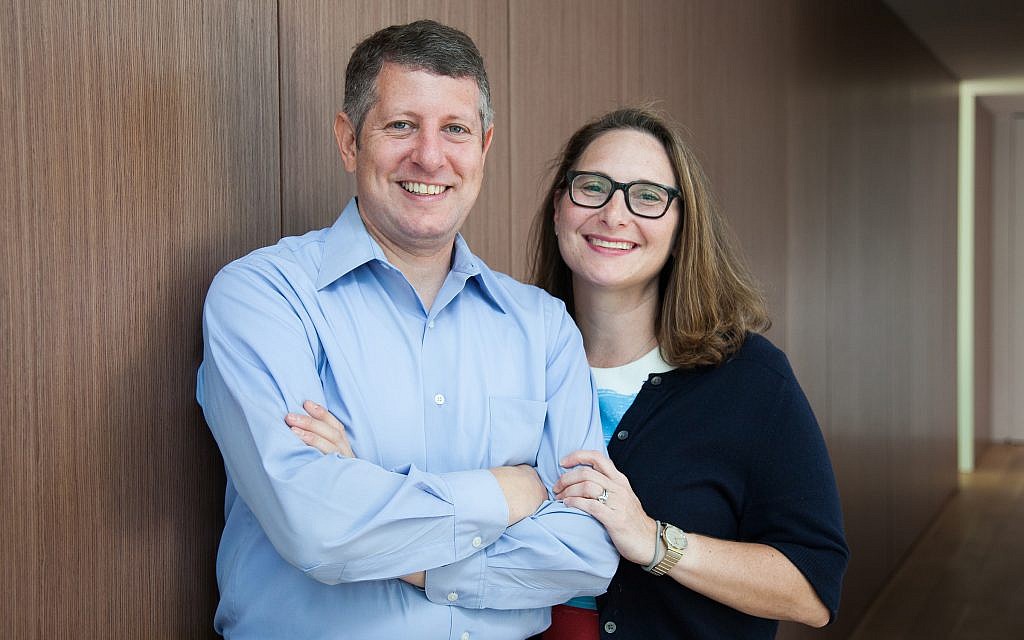
Marcia: How does an architect go about designing his own home?
David: This is the first house I have designed for myself. I approached it like any other project, starting with developing the program. How many bedrooms, bathrooms, etc. Next, I looked critically at the “idea” of a house. What interests me and what bothers me about current house design and construction. Other factors that come into play are the orientation of the house, the site placement, views, materiality and sustainability.
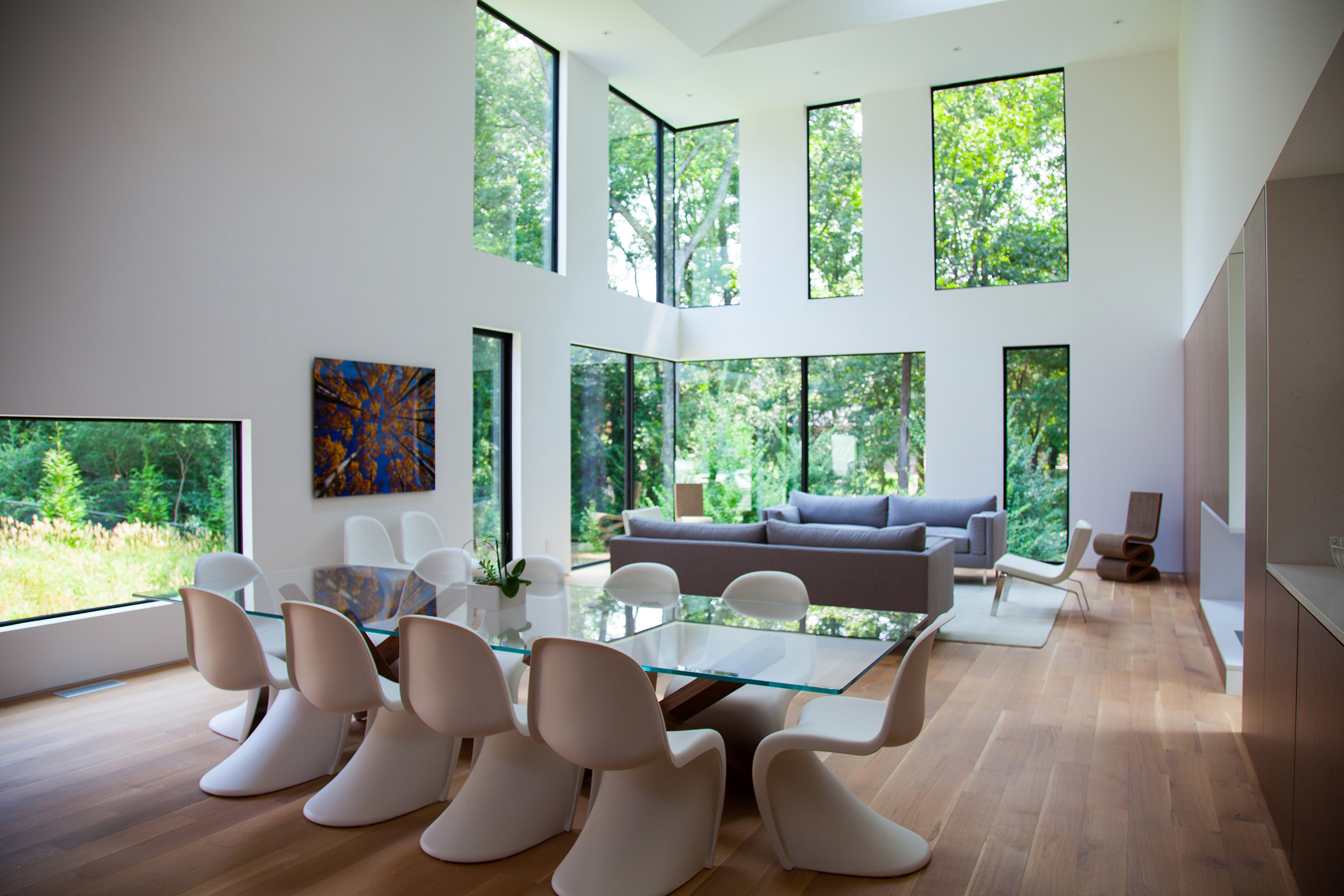
Marcia: What are some unique features?
David: The green roof. Plants serve to reduce storm water runoff, mitigate energy consumption, improve air quality and complement the architecture.
One side of the house has a complete wall (61 feet) of cabinets that serve as storage, [place for] TV, fireplace, dining room buffet, refrigerator and freezer. It’s practical and allows us to hide things to maintain the minimalist interior.
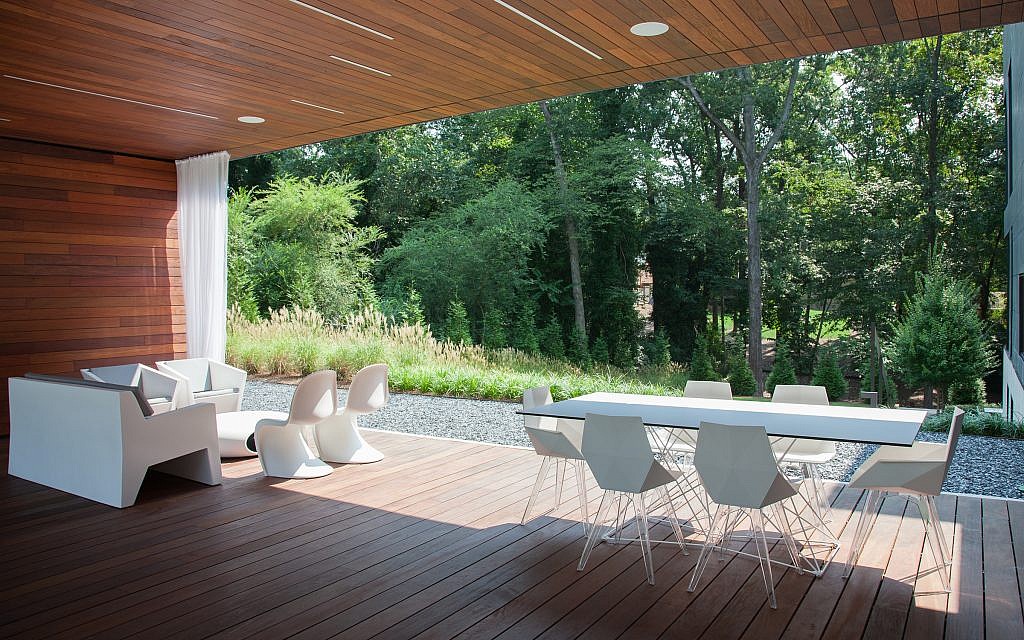
The outdoor breezeway is a space to hang out and doubles as the entrance to the house and the guesthouse.
The exterior cladding is a rain screen, which means there is an air space between it and the waterproofing. This capillary break allows any moisture behind the wall to drain and dry out. It’s a better way to build walls.
Marcia: Define minimalist style.
David: Having a simple and clear form with the focus on using fewer elements. It’s about subtraction, leaving only what is necessary. The exterior cladding and interiors are devoid of extra decoration … no unnecessary trim or molding. The rooms focus on being clean, uncluttered and light-filled. This leads to an unarticulated, uncomplicated plan with attention to the detailing for a calm environment that is about the space itself and the views. The walls are all Benjamin Moore Super White.
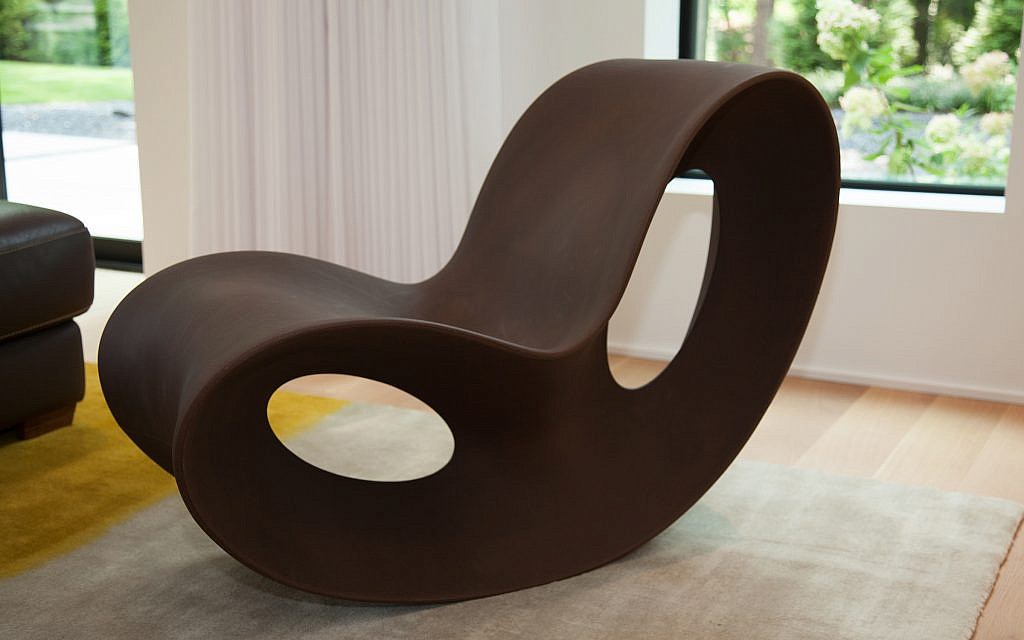
Marcia: What art do you collect?
David: I admire Richard Serra sculptures. He takes a singular material and creates an experience that’s not about the artist’s personal feelings or some artificial reference but about one’s relationship to the object and how we interact with it. It’s very architectural. My favorite architect is Yoshio Taniguchi, a minimalist who is best known for his addition to New York City’s Museum of Modern Art.
Debra: We have photographs from John Richter, who we discovered while skiing in Vail. He is a landscape photographer, but we like his more abstract images.
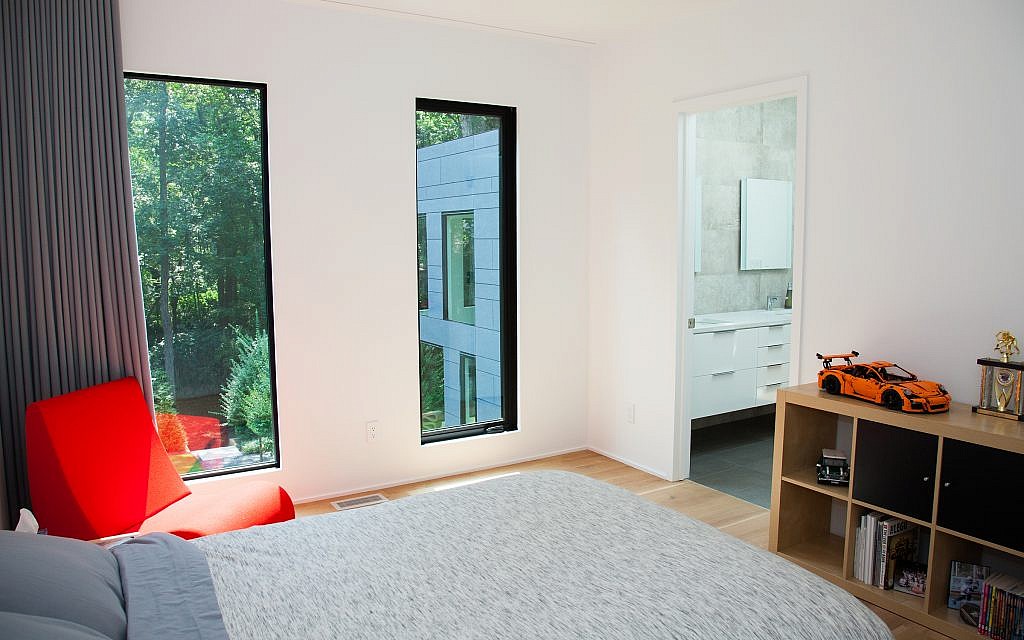
Marcia: How did you design the house to be child-friendly?
David: There are a few areas designed with them in mind. The basement is really the area for the kids to hang out. It’s a big open space with a TV and sofa and large closets for toys.
We also regraded the backyard to add additional play space.
Our kids are getting older, so we weren’t worried about steps and railings and those sorts of things. I didn’t change the level of finish or alter anything just to be child-friendly.
The hallway adjoining their rooms has built-in study desks. The bedrooms have Stem beds and nightstands and IKEA cubbies. The closets have built-in dressers. Their walls have magnetic white boards, so we can be organized and make lists, doodle and use for school work.
Debra: The true favorite space for the kids is an unfinished portion of the basement, “the hockey room,” because it is exactly for this purpose. All three of our children play ice hockey, as does David. So, I can actually hear sticks clanking and pucks flying down there!
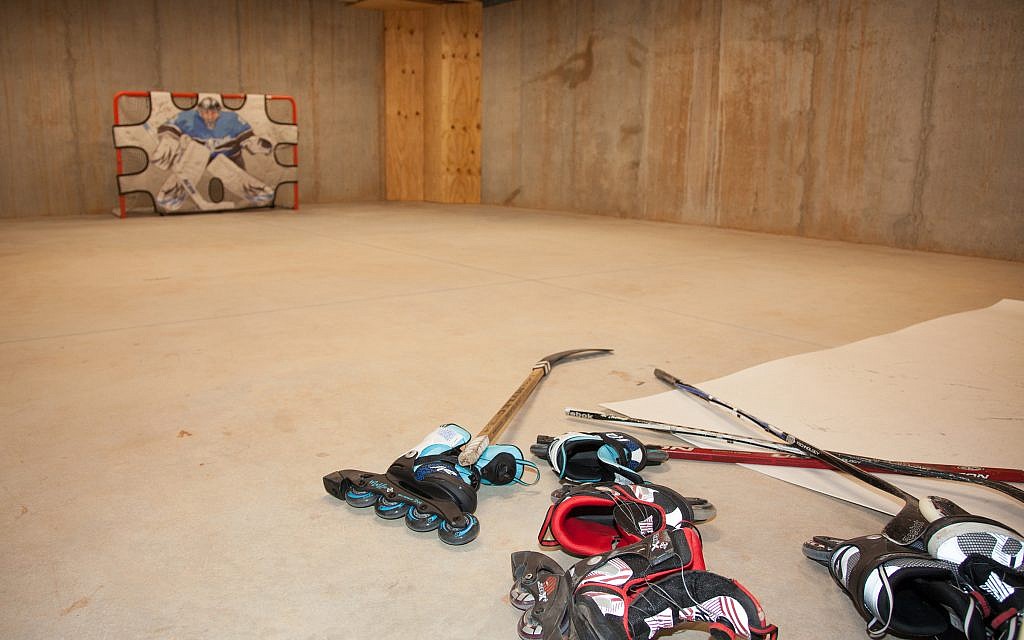

Marcia: What are the specifics you installed for a kosher kitchen?
Debra: We have two sinks, two dishwashers, a double oven; and our refrigerators have a Shabbos mode. They are actually Thermador even though all of our other appliances are Miele. (The Miele version did not have a Shabbos mode). The kitchen is set up so the basics on one side are meat and the other side is dairy. We have loads of cabinet space to keep everything separate.
The counters are Caesarstone quartz. In addition to the dining table, we have six stools from CB2, where the kids often sit as overflow for Shabbos meals.
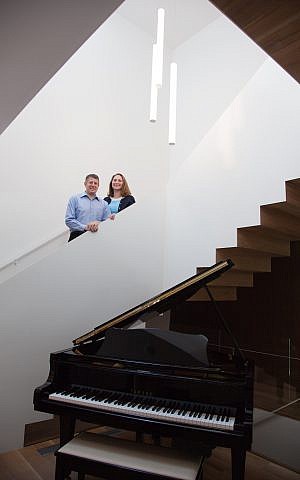
Marcia: Leave us with some really cool design “gimmicks.”
David: We used hidden door hinges for a sleek look.
All of the light switches on the main floor are hidden on a single wall. They are programmable through a Lutron system.
And the fireplace is liquid ethanol, so it burns clean and you don’t need a chimney.
Debra: One thing that’s sentimental (and not minimalist) is that David gave me a one-of-a-kind Frabel glass heart. On the other hand, the hockey rink is not so sentimental!




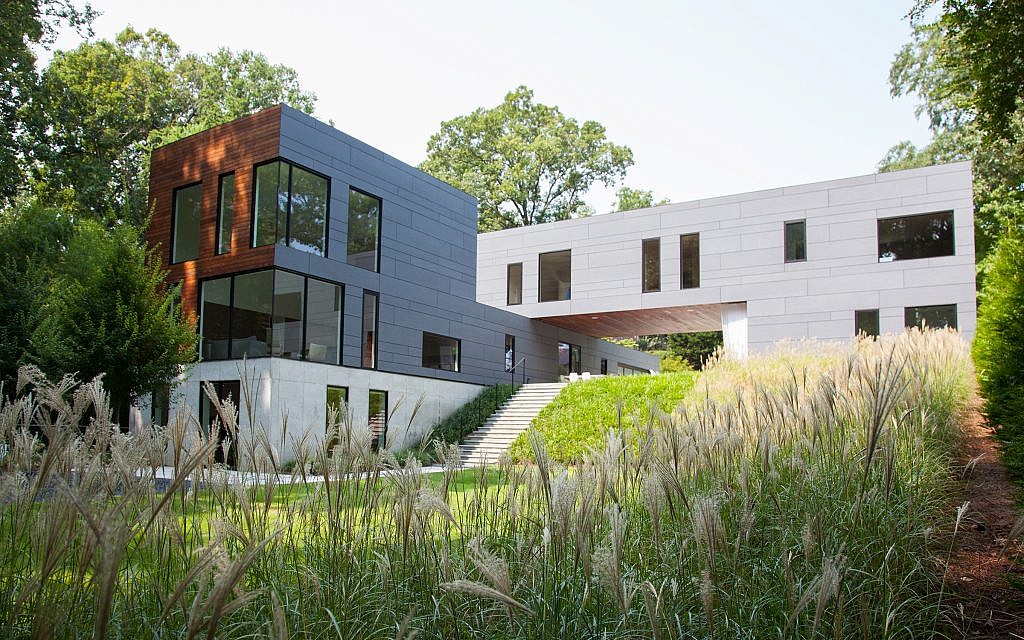
comments